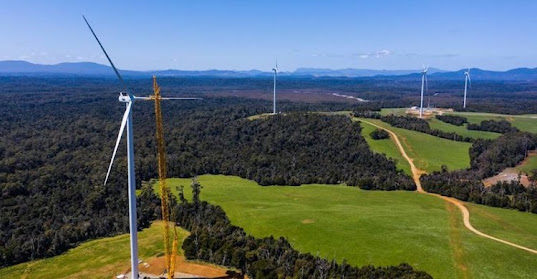In the documentary ‘A life on our Planet’, David
Attenborough lays out the facts but also offers a future of hope if human
beings take appropriate remedial action.
The first scenes are around the Chernobyl nuclear
disaster of 1986 in the Soviet Ukraine.
However, David
says that “A bigger tragedy is the loss of Biodiversity across our
Planet”.
The Natural World is failing. “We have to act now to put it right”.
1937 – 2.3 Billion World population. Carbon in the
atmosphere 280 parts per million and the Wilderness was 66%. By 2020 – 7.8 Billion World population. Carbon in the atmosphere 415 parts per
million and the Wilderness reduced to 35%.
The World is 4 Billion years old. 65 million years
ago there was a mass extinction by a meteor colliding with the earth wiping out
75% of all species.
In the last 10,000 years the temperature has only
varied by 1degree up or down. The season
were reliable and predictable. Farming
and food crops required clearing of the land.
Whaling in the 1970’s reduced Blue Whales to a few
thousand and the “Save the Whales” campaign was launched.
·
By
2000 Borneo’s Rainforest was reduced by half in 50 years.
·
Half
the species on land live in the rainforest.
·
Tree
diversity is the key to the rainforest.
·
Many
rainforests were converted into oil palms
·
3
Trillion trees have been cut down around the world
·
Half
the worlds rainforest have already been cleared.
·
From
the 1950’s onwards, 90% of the large fish in the sea have been removed.
·
1998
was around the time coral bleaching was seen.
·
In
the last 200 years Coal and Gas have produced Greenhouse gases in the
atmosphere to a worrying extent.
·
Up
until the 1990’s the ocean absorbed much of the carbon and masked what was
really happening
·
Melting
of the polar caps
·
In
the last 90 years, the temperature has risen over 1 degree the speed of change
exceeds that of the last 10,000 years
·
The
Arctic has reduced by 40% in 40 years.
·
Humans
have over fished the oceans reducing fish stocks by 30% to critical levels.
·
Human
are cutting down 15 billion trees each year
·
Rivers
and lakes are being dam and polluted
·
Fresh
water populations have been reduced by over 80%
·
“We
are replacing the Wild with the Tame”
·
Half
the fertile land on earth is now farm land
·
70%
of birds on the planet are domestic birds and the majority of those are
chickens.
·
Humans
account for 33% of the mammals on earth.
A further 60% are animals we raise to eat and 4% from mice to whales
make up the rest.
·
Since
the 1950’s wild animal populations have more than halved
PREDICTING THE FUTURE IF HUMANS DO NOT TAKE ACTION TO
CHANGE
2030’s – The Amazon will be cleared and become a dry
savannah. The water cycle alters
further. The Arctic become ice
free. Global warming increases. Frozen soils thaw releasing methane gas which
is more potent than carbon. Climate
change is accelerated drastically.
2050’s – Oceans heat and become more acidic – corals
die. Fish populations crash
2080’s – Soils exhausted by overuse. Pollinating insects disappear. Weather is more and more unpredictable
2100’s – 4% C warmer.
Large parts of the earth are uninhabitable. Millions of people rendered homeless. Mass extinction is under way. Irreversible
change. 11 Billion World Population
WHAT CAN BE DONE TO REVERSE THE CURRENT SITUATION?
“We need to restore biodiversity – the thing we have
removed”
“We must ‘REWILD’ the world
“Access to health care of all”
“Help people out of poverty”
The World population will peak sooner and at a lower
level if we take appropriate action
Endeavour to keep girls at school as long as possible
Increase the standard of living without increasing
the impact on the world
RENEWABLE ENERGY.
·
The
natural world of trees rely on solar.
·
We
need to faze out fossil fuels and run the world on the energy of nature –
water, sun, wind and geo-thermal.
·
Renewable
power plants – Solar farms.
·
Morocco
is a great example of what can be achieved.
·
Within
20 years, renewable energy will be the main source of power and energy will be
more affordable
·
Cities
will be cleaner and quieter
·
Renewable
energy will never run out.
·
The
ocean can reduce carbon in the atmosphere and the more diverse it is the better
the job it can do.
·
The
healthier the habitat in the ocean the more fish will be there. “No Fishing Zones” created which will results
in fished areas being restocked.
CHANGING THE WAY WE DO THINGS
·
Reduce
farmland
·
Change
our diet to be more plant based which will reduce the need for land by half
·
The
Netherlands is a great example of less space, less water, less pesticides and
is now the 2nd largest exporter of food in the world.
·
Forest
lock away carbon
·
“If
we take care of nature, nature takes care of us”
·
“Establish
a life in balance with nature”
·
“Work
with nature rather than against it.
The documentary end where it started at Chernobyl
showing that nature has claimed the abandoned city back with birds and animals
etc returning.














